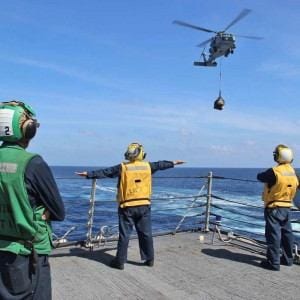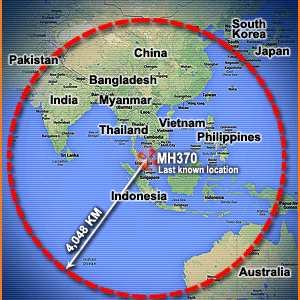The Travel Detective
Travel Detective Blog: Theories on What Really Happened to MH370
 As the speculation regarding MH370 has expanded to include psychics and theories inspired by the TV drama “Lost,” Peter offers some much-needed perspective and analysis on what most likely happened to Malaysia Airlines Flight 370.
As the speculation regarding MH370 has expanded to include psychics and theories inspired by the TV drama “Lost,” Peter offers some much-needed perspective and analysis on what most likely happened to Malaysia Airlines Flight 370.
In the first day after MH370 was reported missing, I began what has turned into an obsession with regards to what happened on and to that flight.
In a world of almost incendiary conjecture,and some pretty wild—and expected—speculation, I tried to maintain some sense of perspective and reality. After all, there are so many red herrings about this story that you could open up a fish store.
So, I used my experience in reporting on airline accidents (as well as investigating probable cause) since 1975 to separate the impossible from the possible. But, because of the circumstances of the incident and what little was known, even the impossible had to stay on the table…at least for a while. Still, I started with about 12 more likely, possible scenarios, and have now reduced them to three.
From day one, I ruled out catastrophic structural failure. Had the plane broken apart at that altitude, there would have been a large debris field. But none was found.
I also ruled out a deliberate explosion on the plane, either by terrorism or sabotage. This was for the same reason—no debris field. By comparison, when Pan Am 103 was blown up by a bomb over Lockerbie, Scotland on December 21, 1988 —a story I also covered—the debris was found all the way up to the North Sea.
Was it an onboard fire? If so, why was there no radio distress call? Yes, the fire could have been so intense and could have spread so quickly that it severed all the electrical power. But I ruled this out as well, since the plane could not have continued to fly for six or seven hours on fire. Later, when Malaysia Airlines released the entire cargo manifest and revealed that the Boeing 777 was not just carrying a lot of mangosteens but 200 kg of lithium ion batteries (in my book, this is dangerous cargo with a history of catching fire), I had to look at the onboard fire scenario again.
But, once again, I had to rule that out. Why? Lithium ion batteries burn at a tremendous heat and intensity, and no current airline fire suppression system is capable of containing, let alone extinguishing, such a fire. Translation: The fire would have been both lethal and swift, and the plane could not have continued on for long.
I long ago ruled out a number of the conspiracy theory scenarios, including the one that sounded like an episode of Lost—that the plane had landed, was being refueled, or being armed, for a terror/suicide mission, destination unknown. (This was again ruled out immediately prior to the Malaysian Prime Minister making his announcement that the plane was lost with no survivors).
In the end, there are only three possible scenarios still on my table:
- A botched hijacking, with a struggle for control in the cockpit, resulting in the plane dropping into the Indian Ocean. This might explain the deliberate, and manual reprogramming of the inertial navigation system keypad, the disengaging of the transponder, and the abrupt left hand turn.
- Pilot suicide. Again, it would explain the intentional acts in the cockpit.
- The scenario I’m still considering: pressurization failure…a gradual pressurization loss, resulting in the gradual incapacitation of the flight deck crew, followed by unconsciousness and death, with the plane on autopilot until it literally ran out of fuel. The key word here is “gradual,” since—in this scenario—it might explain a pilot’s last attempt before losing consciousness to turn the plane around. It might also explain an attempt by the pilot to reach some instruments and in the process accidentally turn off the transponder. The unknown piece of information: Did the pilot take the plane off autopilot before or after reprogramming the INS? If so, that might explain the fluctuations in altitude. Later, when the plane dropped down, that may have been the result of one or two engines running out of fuel.
 Now, after having said all of this, comes the most frustrating part. There’s every reason for me to believe that we may never know what happened on MH370. Even if they find the CVR (the cockpit voice recorder), and even if it is intact and has not been compromised by salt water or intense pressure, the fact remains that a CVR can only give investigators the cockpit conversations of the last two hours of any flight (older models gave only the last 30 minutes). If this plane did indeed fly for 6 hours plus after the left turn, the CVR might yield absolutely no clues about what ever prompted that turn hours earlier—or anything else.
Now, after having said all of this, comes the most frustrating part. There’s every reason for me to believe that we may never know what happened on MH370. Even if they find the CVR (the cockpit voice recorder), and even if it is intact and has not been compromised by salt water or intense pressure, the fact remains that a CVR can only give investigators the cockpit conversations of the last two hours of any flight (older models gave only the last 30 minutes). If this plane did indeed fly for 6 hours plus after the left turn, the CVR might yield absolutely no clues about what ever prompted that turn hours earlier—or anything else.
From day one it has been baffling, frustrating, and mind boggling. Maybe a life preserver or piece of plastic will float to the surface and show up on a beach in Indonesia, Australia, or somewhere totally unexpected in the next week, month, or year. Even then, we may never know what happened. In a world where we expect our favorite television investigators to solve complex mysteries in 46 minutes every week, our expectations are absurdly high. Reality, on the other hand, has intervened.
In any airline accident, the lessons we learn need to be applied. One thing you can more or less count on will be the upcoming rule making, requiring the installation of cockpit voice and airplane data transmitters—NOT recorders—that will continuously stream to satellites voice and information from a point 30 minutes before departure until 30 minutes after arrival. It will be powered by a separate electrical source on board the plane and have backup power as well. There will be no manual override switch to turn the system off. The technology has been available for a while, and now it’s time to include it on every single commercially operating flight in the world.
For more information on MH370, check out:
- Was MH370 Hijacked?
- Debunking MH370 Conspiracy Theories
- A Pilot’s Perspective on MH370
- Peter’s Travel Detective Blog
- CBS This Morning Report
By Peter Greenberg for PeterGreenberg.com













